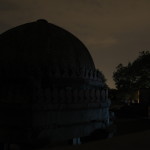
We awoke after our first night in India to the Muslim call to prayer, a high tenor voice chanting over loudspeakers somewhere nearby. Sunlight angled through three imposing stone domes , each with lotus decoration on simple columns.
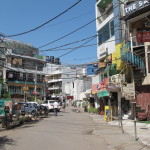
These ruins were part of the reason we stayed in Hauz Khas Village, a chic gathering place for the young and the wealthy in South Delhi – though it looked anything but chic when we arrived in the middle of the night. We found the ruins to be much more interesting than we expected – for they were our first introduction to the swath of Indian history under the rule of Muslim shahs.
That period began in the early 13th century when Persian armies swept into the country and then lasted as the Mughal emperors out of Afghanistan controlled things from the 16th century until the British took over in the mid-19th.
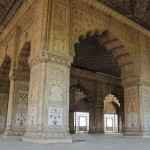
We knew of India as a Hindu country, with a Muslim minority. What we didn’t realize is the long extent of Muslim rule up in the north, a control that often oppressed the Hindu majority and stirred bloody rebellions. The enmities flared and smoldered for generations, culminating in 1947 with the division of the country by the departing British into a Muslim part, Pakistan, and a Hindu India. Aside from the wars and tensions between the two countries since then, the Muslim 20% of the country live in their own uneasy peace with the majority. The narrow lanes and ageing structures of Old Delhi divide into a Muslim section and a Hindu one.
Still the Muslim call to prayer is heard all over Delhi, including Hauz Khas Village, at mid-day and sunset, as well as the morning. And Hindu and Muslim visitors alike, along with foreigners, flock to the ancient temples, tombs, forts and mosques all around Delhi, the surviving monuments of Muslim imperial strength and former grandeur.
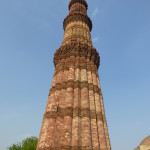
The best place to begin is to the south of Delhi with the Qutub Minar Complex, the first city of the storied seven cities that have been the centers of Delhi. The iconic 72-meter minaret, a large column constructed of several levels of banded, script-covered columns, dates from 1202. It was intended to declare Muslim rule and mark the eastern edge of the Muslim faith at the time.
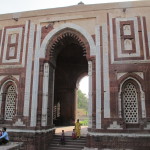
The most charming structure extant – Alai-Dawarza – is a highly decorated gateway from the early 1300s. It reflected the purest principles of Islamic architecture, presumably, as we observed, through proportionality, balance and restrained but complex decoration.
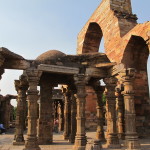
The rest of the extensive site at Qutub Minar consists of a scattered set of ruins of mosques, ceremonial buildings and so on. Yet, along with the two main structures, several elegant colonnaded passageways around huge atria (some using pillars repurposed from Hindu temples) and imposing walls with arched gates still stand. All attest to a power eager to declare its importance and culture in brick and stone.
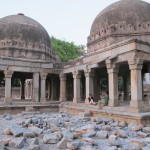
Moving forward in time, our Hauz Khas domes date from the mid-14th century at the time of the fifth city of Delhi (Firozabad), though the large reservoir below it began at the end of the 13th century to store water for the second city of Delhi (or Siri) founded just to our east. The domes top tombs of the ruling shahs, notably Firuz Shah. He added an important madrasa here for Islamic religious training in a three storied L-shaped building still standing on the site and constructed of cut stone blocks of different sizes.
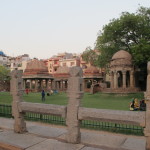
Ironically, it is a popular spot for the primarily Hindu population locally. Every morning kids play cricket in the open space among the tombs, which also make good resting places from the mid-day heat, refuges from the afternoon rains, or hideaways for embracing couples. In the afternoon, groups of women gather for conversation, like a university class, while other middle class Indians explore the ruins.
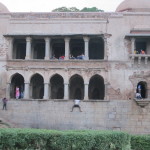
By evening, the reservoir hosts even more locals. Indians dressed diversely in saris, shorts, or long pants – and shod in pointed leather shoes, sandals or sneakers – exercise by circling the kilometer-long perimeter of the lake and the adjacent parkland.
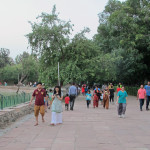
In a few years after Firuz Shah, those Mughal emperors would project their power through other structures one can still see around Delhi.
The most notable of these dates from the 16th century, a massive mausoleum for the second Mughal emperor Humayun, built in Persian style by his top wife.
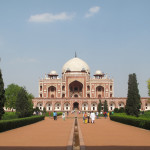
Though it’s not immediately apparent from the predominantly red sandstone façade of the stunning tomb, this was a model for the Taj Mahal (as well as for later Mughal architecture apparently).
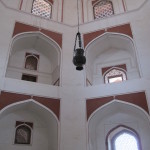
Keep looking at the core building floated atop an extended base of white niches, however, and you can start to see the resemblance to the Taj Mahal in the bulbous center dome atop a central section where Humayun lies and the outlying smaller domes, each atop an octagonal section attached to the central one (for his wives). Overall, you feel a strict structural balance and harmonization, designed to impress.

Peculiarly, just outside the main tomb site here, there is a much smaller octagonal tomb with a charming setting and striking, but restrained decoration. This one honors a noble family from a powerful Afghan court opposed to the Mughals. Even then, wealth and power had its privileges, and respect.
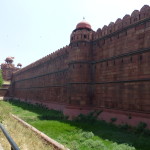
The ultimate statement of Muslim dominance within Delhi comes at Red Fort, which was built in the mid-17th century by Shah Jahan after he shifted the court from Agra and made his Shahjahanabad the seventh city of Delhi. Red Fort was then home to the Mughal emperors for two hundred years. Approximately two kilometers around, the three-tier high enclosing walls of red sandstone brick still put visitors in awe; you can’t help but think of the similarly walled Kremlin harboring its own emperors. It is indeed a fort, not just an imperial home.
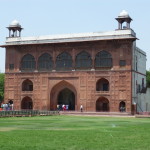
Inside, Red Fort is filled with a large number of ceremonial buildings, court dwellings, baths and mosques required by the ruling court, all connected by broad walkways. It is grand in every way, from the overall scale to the elaborately detailed buildings. Like modern tourists, most visitors in the past would start through the greeting hall, whose marbled entrance and intricately patterned passageway, enhanced in the old days by welcoming musicians, could not fail to impress.
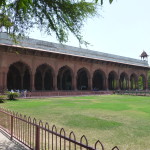
Next, down a long central path you reach the main audience hall, where the shahs’ throne sits at the back of a rectangular building. Playing with perspective and visual recession, the hall gets your attention with its scalloped arches throughout, three deep and nine across, and the columns supporting the arches.
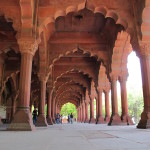
Even the marbled and colorfully decorated buildings intended to be more private – for prayer, sleeping and bathing (in a fairly modern setup of hot and cold waters) – declare power and wealth.
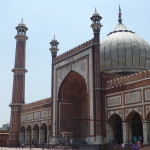
And so does the grand scale of Delhi’s principal mosque, or Jama Masjid, about a kilometer from Red Fort within the heart of Old Delhi near bustling Chandni Chowk street. Dating from the same time at the fort, this is India’s largest mosque. Impressive in itself, the main prayer hall echoes the style of Humayun’s tomb, with three large domes balanced behind a large central gateway and sitting atop a red sandstone base of arched entrances.
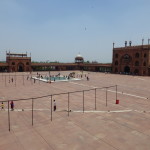
When we visited, a few hundred people lounged on the marble floors and in the shade outside along the colonnades, awaiting the time for mid-day prayer. Yet, at major festivals like Eid, the huge enclosed courtyard, with a large cleansing pool at its center, can accommodate 25,000 in prayer.
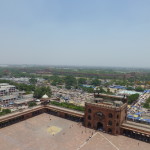
Flanking the main hall are two spindly towers about 40 meters high. We climbed the narrow spiraling inner staircase of one tower for a higher view of the vast courtyard, and some perspective on what we had seen. To the south was the far reach of New Delhi, itself begun to project British dominance; just below, there was Old Delhi, divided into those Muslim and Hindu sectors.
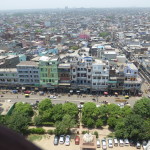
Soon the mosque’s call to prayer would project through loudspeakers across the city, as it would later that evening back at Hauz Khas. Though now within a predominantly Hindu state, Muslims gathered and prayed just as they had since the time of the Persian emperors and their Mughal forebears.
(Also, for more pictures from India, CLICK HERE to view the slideshow at the end of the India itinerary page.)


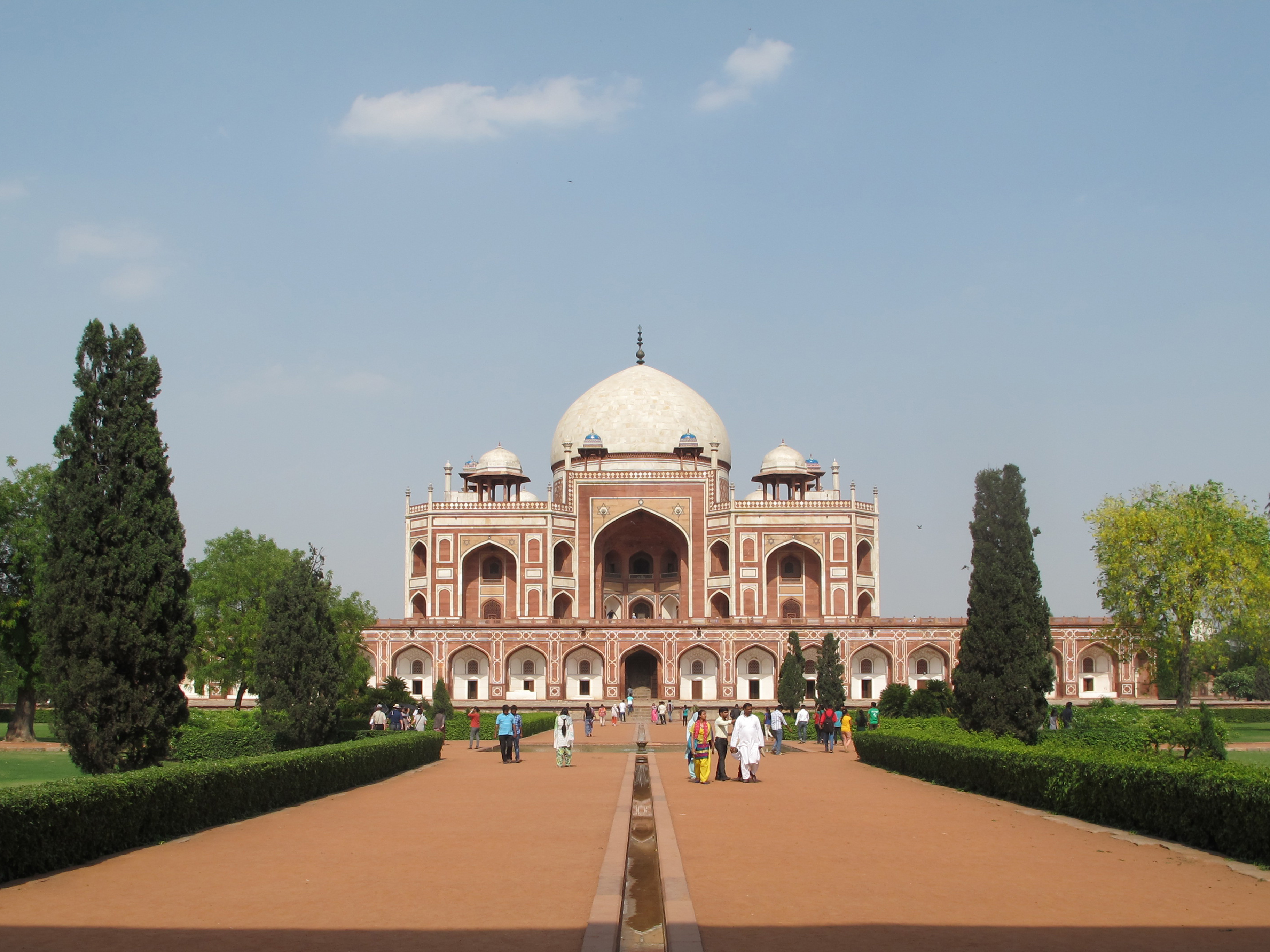
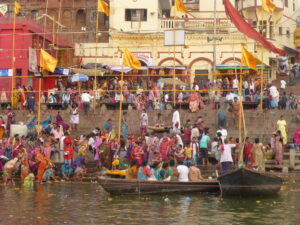
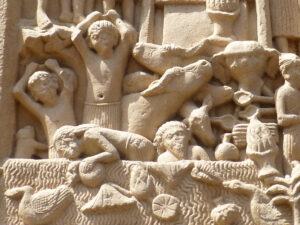
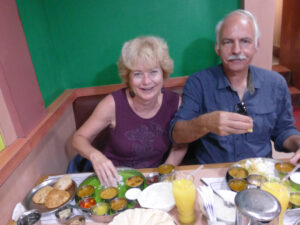
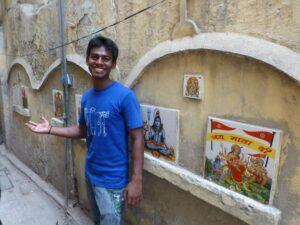
Reminds me of my trip to India – but I wish I had seen the Tombs of Hauz Khas! Great pics.
Not on the major list of sites, but worth the visit…particularly to see the chicness of the restaurants, boutiques, etc